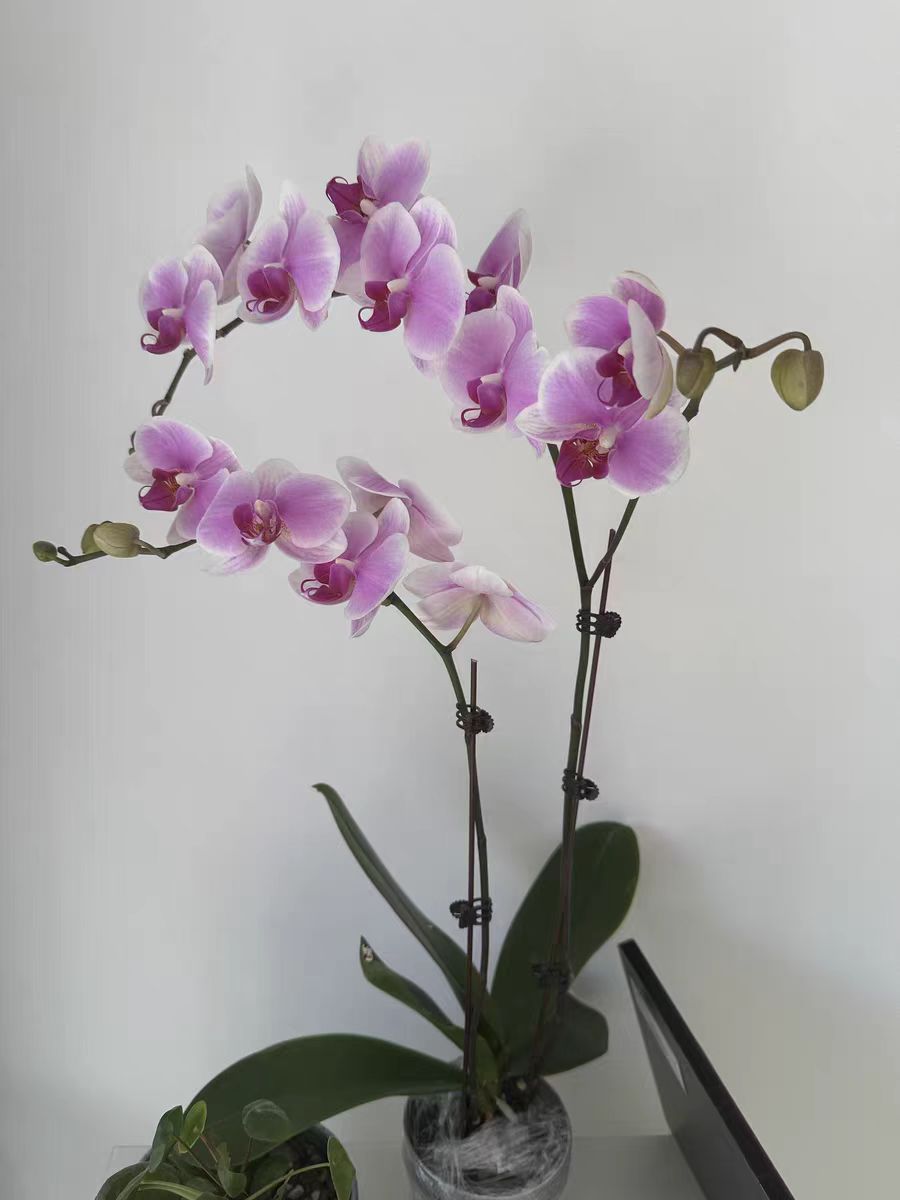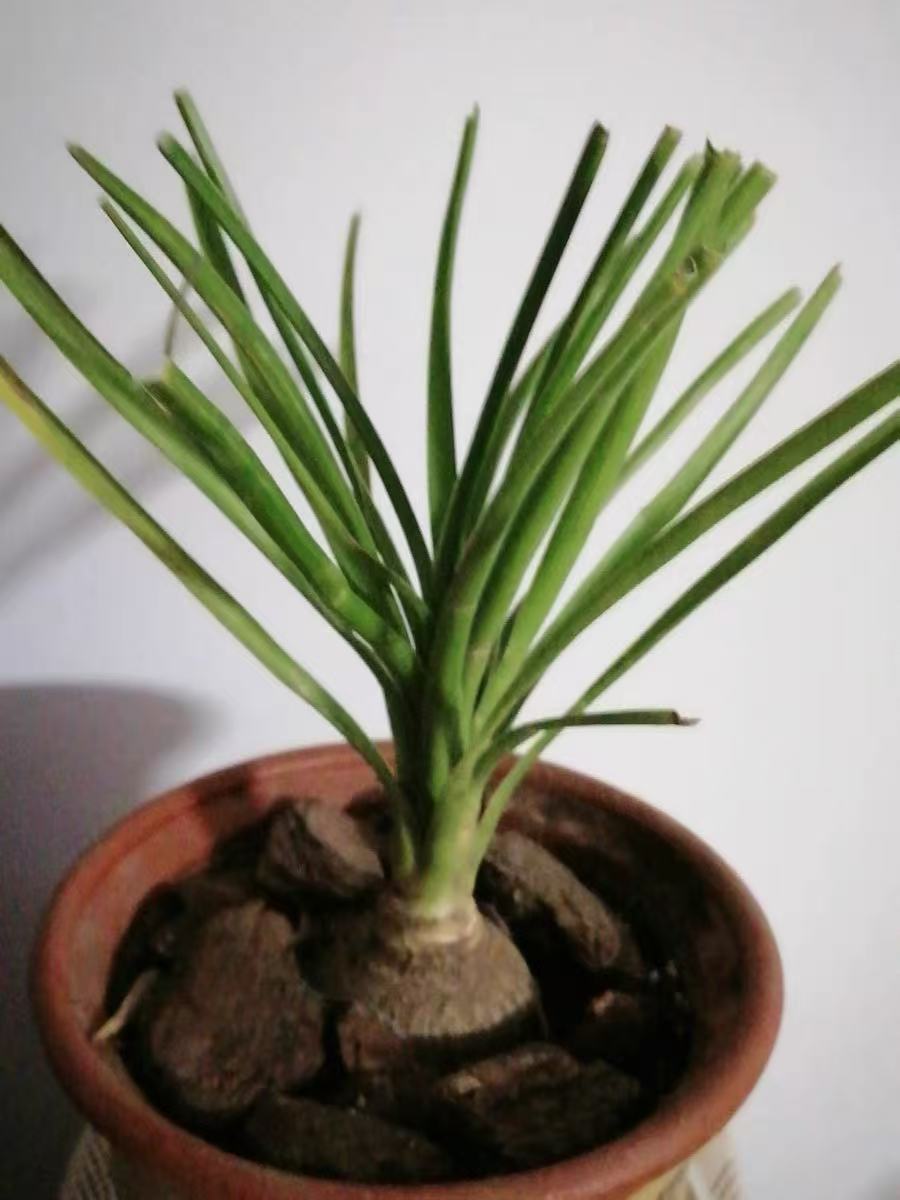Choosing orchid varieties suitable for indoor cultivation in winter can not only add a touch of vitality to your home but also bring fresh air and good meanings. Next, several orchid varieties with relatively good cold tolerance will be introduced to you, including Phalaenopsis, Oncidium, Cymbidium ensifolium, and Cymbidium goeringii, to help you make a wise choice.
Phalaenopsis: Phalaenopsis, with its petals shaped like butterflies, is one of the top choices for a beautiful home environment. There are thick white aerial roots around its leaves. These aerial roots can protect flower buds, enable the orchids to survive at low temperatures, and provide nutrients, making the flower colors festive and bright. Phalaenopsis prefers an environment with sufficient light but is not tolerant of direct sunlight. In winter, the indoor temperature should be kept above 15 °C, the air humidity should be maintained at 60% - 80%, and good ventilation should be ensured. When watering, the amount of water should be controlled to avoid waterlogging. Wait until the surface of the potting soil is slightly dry after each watering before watering again.
Oncidium: Oncidium, also known as the lucky orchid, has a unique charm, extremely high ornamental value, and emits a delicate fragrance that can freshen the air, making it suitable for being placed in the living room. Oncidium prefers loose, breathable, and well-drained soil. It can be planted in special orchid soil or soil prepared by yourself. It likes abundant diffused light but avoids direct sunlight. When the light intensity is not high in winter, it can be placed on the south balcony to receive sufficient direct sunlight. The suitable growth temperature for Oncidium is 18 °C - 25 °C. In winter, pay attention to keeping it warm to avoid damage caused by low temperatures. When watering, adjust according to the season and the dry and wet conditions of the soil, keep the soil moist but not overly wet, and avoid water accumulation in the leaf center to prevent rotting.
Cymbidium ensifolium: The root system of Cymbidium ensifolium is extremely developed, so the air permeability of the soil must be ensured. It especially likes sunlight. During daily maintenance, it should be placed in a place with sufficient light as much as possible, such as the top layer of the orchid room shelf, to promote flower bud differentiation and improve the quality of flowering. Cymbidium ensifolium has relatively poor cold tolerance. The most suitable growth temperature is between 20 °C and 28 °C. When the temperature is low in winter, it should be moved indoors for maintenance, and the room temperature should be kept no lower than 5 °C. When watering, follow the principle of "watering when the soil is dry and stopping when it is wet" to avoid waterlogging. When fertilizing, apply appropriate amounts of fertilizer frequently in small doses. In winter, reduce fertilization or stop fertilizing.
Cymbidium goeringii: Cymbidium goeringii is suitable for growing in an environment with half shade and half sunlight, avoiding strong direct sunlight. In winter, it should be placed in a bright indoor place, avoiding direct sunlight. The suitable growth temperature for Cymbidium goeringii is 15 - 25 degrees Celsius. When the temperature is low in winter, it should be moved indoors for maintenance, and the room temperature should be kept no lower than 5 degrees Celsius. When watering, follow the principle of "watering when the soil is dry and stopping when it is wet". In summer, as the water evaporates faster, the watering frequency should be appropriately increased, while in winter, the watering frequency should be reduced. When fertilizing, apply appropriate amounts of fertilizer frequently in small doses. In winter, reduce fertilization. Cymbidium goeringii may be attacked by some pests and diseases, such as anthracnose, leaf spot disease, aphids, etc. Regular inspections should be carried out and preventive and control measures should be taken.
Choosing orchid varieties suitable for indoor cultivation in winter requires comprehensive consideration of factors such as cold tolerance, light requirements, temperature management, watering methods, and fertilization strategies. Phalaenopsis, Oncidium, Cymbidium ensifolium, and Cymbidium goeringii are all good choices. As long as you master the correct maintenance methods, you can easily grow beautiful orchids at home and add a touch of warmth and vitality to winter.
How to Choose Orchid Varieties Suitable for Indoor Cultivation in Winter?

Share with
Tagged in :




Leave a Reply